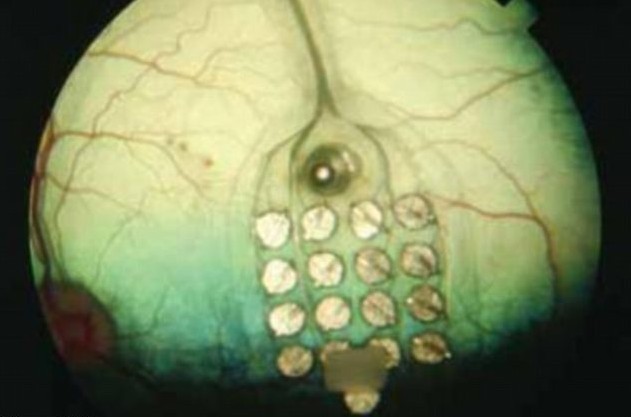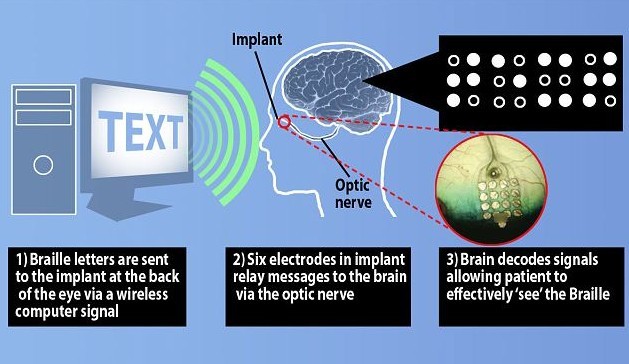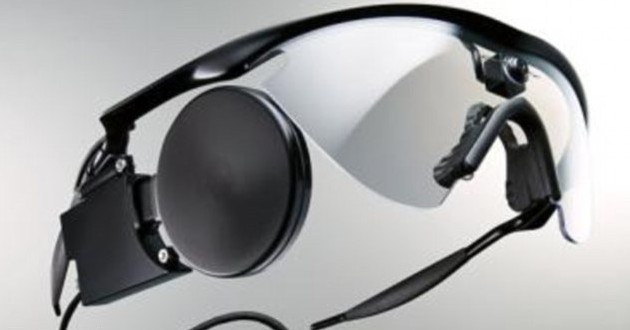New technology allows the blind to "see" words, which is expected to benefit many blind people.

Argus II enables real-time text transmission to the implanted chip.
The new technology helps the blind to "see" and understand words in one second.
Some blind people use special glasses to see the outline of the object, and the video camera on the glasses sends the data to the chip implanted in the retina of the blind person.
The invention of Braille built a bridge for the blind to communicate with the outside world. They read, write and carry on their daily life through the touch of their fingertips. Nowadays, with the development of science and technology, blind people can even "see" words with their own eyes, as if seeing the light again.
According to the British "Daily Mail" website reported on November 23rd, this new system, named argus II, developed by American scientists, consists of an implantable retinal electrode array and a miniature video camera mounted on glasses, and is upgraded from the existing blind assistant system.
In the previous system, the video signal captured by the camera was converted into optical mode by the processor on the glasses, and sent to the nerve implant device, so that the blind could see the general outline of the object, but it was impossible to read it, because the text had to be large and it took several minutes to "translate".
Researchers in California, USA, managed to improve this system. Because Braille is composed of 63 coded characters, each character is arranged in a rectangle with 6 points by 1 to 6 protruding points, the researchers bypass the camera and directly stimulate the points with 60 electrodes, so that the text signals can be transmitted to the chip implanted in the retina of the eye in real time, and then these signals are transmitted to the visual nerve. After decoding, Braille words will be generated in the brain, so that the blind can "see" the words.
Dr Thomas Lauritzen, head of the research project, said that blind people can recognize a letter in less than one second using argus II system, and the accuracy rate is as high as 89%.?
In addition, if combined with video glasses and text recognition software, this latest system can also help the blind "see" street signs or warning signs in other public places. It is expected to completely change the treatment of patients with degenerative eye diseases and provide new hope for people with rare eye diseases, such as retinitis pigmentosa. However, argus II is unlikely to replace traditional Braille books, and blind people can read 800 letters per minute by touching Braille books.
Peter Osborne, Dean of the Royal College for the Blind, said: "Any technology that may make some people’ see’ things again is a good thing. I hope more people can verify this research. There are about 18,000 blind people who master Braille in the UK. This technology is expected to enable them to communicate and communicate with others better in the future. It is exciting to witness the research progress in this area. "
(Source: China Daily News Xinlian Editor: Zhou Fengmei)